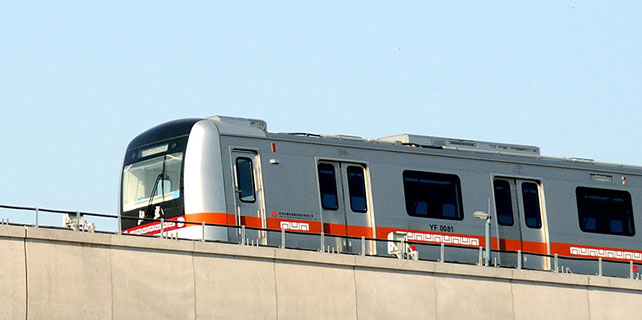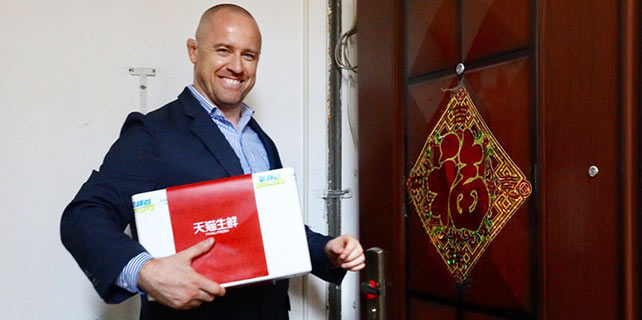Hurdles to sub-Saharan Africa's agricultural growth
The growth picture may be partly explained by stagnating productivity in land and labor
Agricultural development in sub-Saharan Africa was framed as an important objective in the first of the eight major action plans announced at the recently concluded Beijing Summit of the Forum for China-Africa Cooperation.
But if China and Africa want to achieve some real results in this area, one fundamental question must be answered first: On a continent endowed with many natural resources, why is it that agricultural development is so sluggish - never strong enough to support economic transformation?
Before going directly to the answers, we should look at what has happened so far. Over the past several decades, Africa has witnessed growth in its agricultural sector. Since 2000, except for some rare peak years, the agricultural growth rate has swung between 3 percent and 5 percent. However, the contribution is extensive. According to the United Nations Food and Agriculture Organization Statistical Yearbook 2012, agricultural land expansion was responsible for 45 percent of the food production increase, while improvement in yields contributed 55 percent. Globally, it was 30 percent and 70 percent, respectively. Taking Tanzania as an example, its agricultural growth rate was between 3 percent and 4 percent from 2000 to 2011. In the same period land under cultivation grew 7.8 percent, yet there was a mere 0.4 percent increase in yield per unit.
The agricultural growth picture in sub-Saharan Africa may be partly explained by stagnating productivity in land and labor. By comparison, grain output in Asia rose from 1,192 kilograms a hectare to 1,934 kg a hectare. African grain output rose from 1,125 to 1,451 kg a hectare in the same period - a very slow climb.

Today most countries in sub-Saharan Africa have only 50 percent self-sufficiency in food - far from the FAO's 95 percent criteria for food security. Forty percent of wheat consumption and 80 percent of rice consumption comes from imports. The African Development Bank says $35 billion (30 billion euros; £26.8 billion) was spent on African food imports in 2015, which is out of proportion with the continent's rich agricultural endowment.
One reason for this is historical: Africans used most of their good farming land and agricultural facilities for cash crops in the colonial days, and this formed the basis for the current agricultural structure. Another reason is that structural reforms elevated the role of international trade for domestic food security to an unrealistic level.
The frequency of natural disasters and fluctuation of global food prices have not rendered this global market-oriented reform successful, but instead have exacerbated the continent's food insecurity.
On one hand, agricultural growth is sluggish. On the other, it is eroded by population growth. In the past 20 years it has been subject to high volatility, with the average level only slightly higher. In Asia, fast agricultural development can produce material and labor surpluses for the development of nonagricultural sectors, thus driving economic transformation and poverty reduction. But for sub-Saharan Africa, there is a decoupling of agricultural, economic and population development.
Now we come to the constraints on sub-Saharan Africa's agricultural development. First, is the reduction in per capita arable land due to fast population growth, even though Africa possesses roughly half of the world's arable area? In 2015 the figure was 0.21 hectares per capita, higher than the 0.19 world average but far below Europe and Latin America. Another side of the coin is the uneven distribution of arable land within the region.
Second is the lack of irrigation, fertilizer and improved seeds, all of which hinder sub-Saharan Africa's use of its rich land and weather resources. Although irrigated land almost doubled in the five decades since the 1960s, the irrigation rate remains low. In 2006 the irrigation rate was only 5.4 percent in the region, a dramatic contrast to the world's 20 percent and Asia's 40 percent.
Lack of irrigation also contributed to lower efficiency of fertilizer use. Zero production capacity and the high import cost of fertilizer in sub-Saharan Africa constrained the effect of proper fertilizer application in rain-fed agriculture. Difficulty in the adoption of improved seeds is another technical and sometimes cultural issue. The adoption rate increased a lot from the 1980s to 2005 - from 20 percent to 40 percent for corn seeds, for example. But the rate is still low because of a lack of research and development, high costs and unstable performance associated with the level of irrigation and fertilizer use. In addition, people are becoming accustomed to keeping seeds from the harvest rather than buying new, improved seeds each year.
Third, poor mechanization undermines the tapping of land. In 2014 India had 128 tractors per square kilometer, Tanzania had 7.4 and Ethiopia had only four. Lack of production capacity, high costs, poor service and poor infrastructure, such as roads, are all critical factors.
Last but not least, insufficient state support for agriculture, financial support in particular, is an urgent issue that needs to be addressed. The Maputo Declaration of 2003 aims to increase sub-Saharan Africa's annual national budgetary allocation for agriculture to at least 10 percent, thus ensuring at least 6 percent growth in agricultural output annually, but most countries in the region can only allocate 3 to 4 percent for agriculture, and it seems that industrialization in the new century has gained priority over agricultural development in many countries in sub-Saharan Africa, such as Rwanda and Ethiopia.
Though there may be an alternative path to the one that puts agriculture before industrialization, many have realized that, either way, agriculture is a sector that cannot be skipped. The nature of agriculture - its low returns and long process - creates barriers for attracting market-oriented resources. State input thus becomes more crucial for its development. In this sense, the shortfall in capital and production infrastructure is a key factor dragging the leg of sub-Saharan Africa's agricultural development.
The author is assistant dean of the China Institute for South-South Cooperation in Agriculture at China Agricultural University. The views do not necessarily reflect those of China Daily.
(China Daily Africa Weekly 10/05/2018 page10)
















